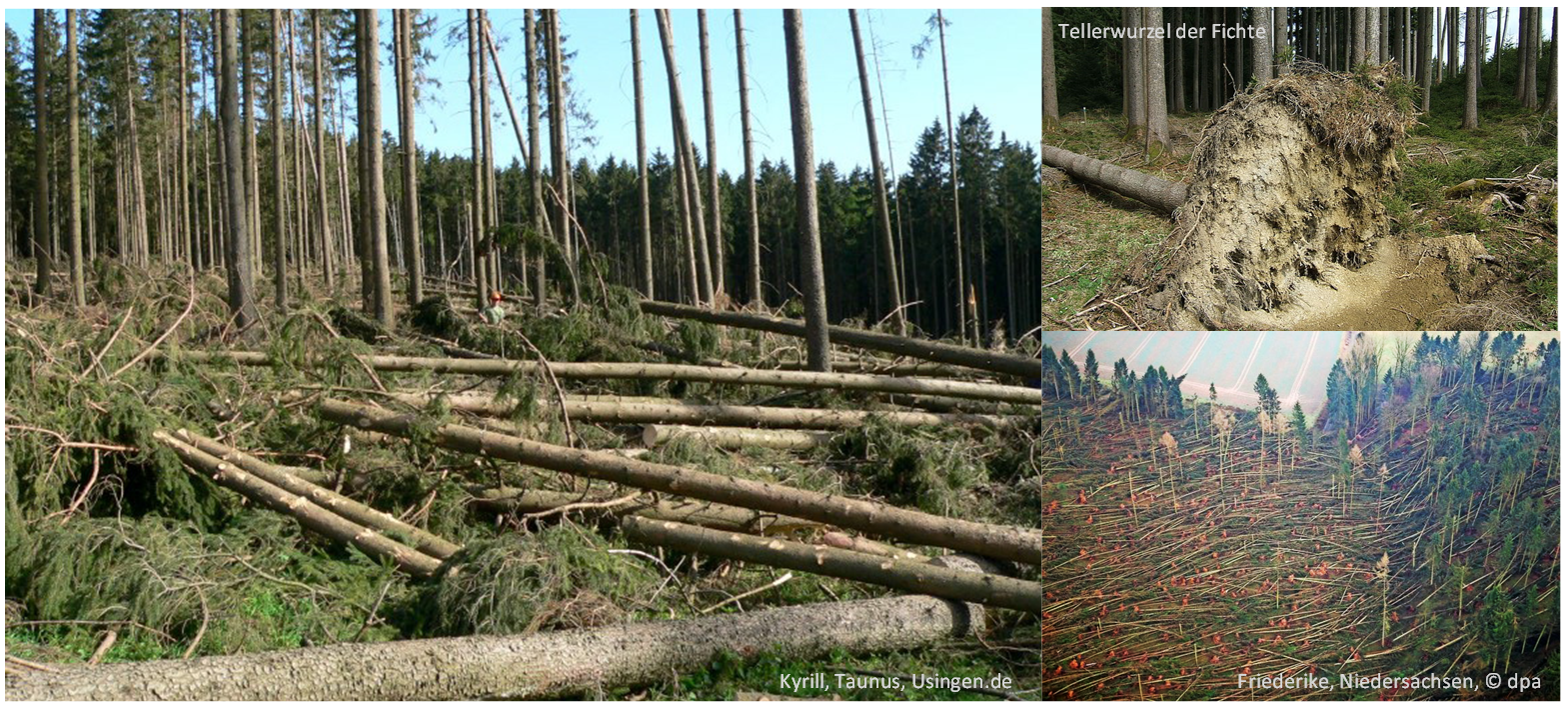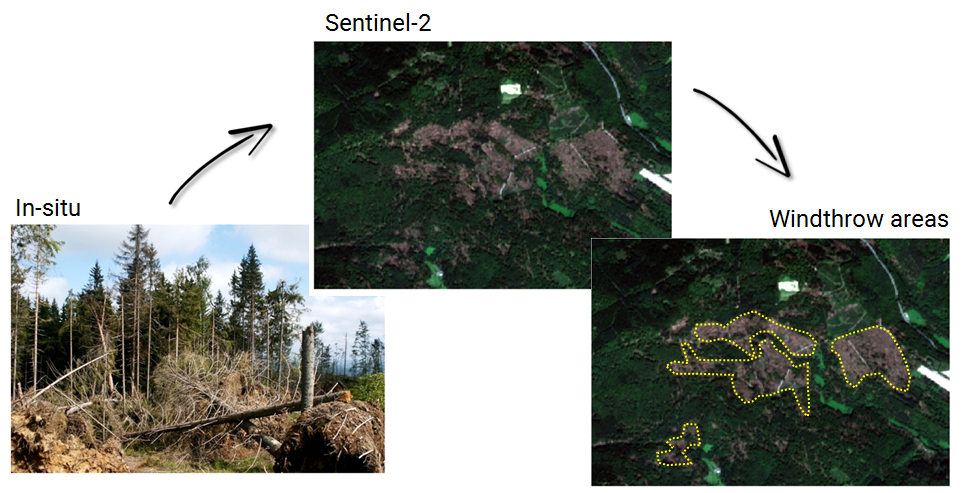Wind throw
Gone with the wind
Anyone who has ever experienced a severe storm or hurricane knows the irrepressible power with which large objects are blown away and entire roofs uncovered. Even trees of more than 40 cm thickness and 30 m height are often unable to withstand the force of nature. They usually do not fall down suddenly, but rather swing back and forth until they break under the wind pressure or are thrown down together with their roots. Every year storm events destroy larger forest areas in Germany. The most important storms of recent decades were Vivian & Wiebke (1990), Lothar (1999), Kyrill (2007), Niklas (2015), Xavier (2017). At the beginning of 2018, the storm Friederike ravaged parts of Europe and caused damage running into billions.
The district government of Arnsberg (Northrhine-Westfalia, Germany) shows impressive images a decade after Kyrill, and gives insights into what such a storm really means: Kyrill - 10 years later
The editorial staff of the TV programme Planet Wissen of WDR, SWR and ARD-Alpha offers here and here small overviews of some winter storms and their damage in the forest.
Pure stands of Norway spruce (Picea abies) are particularly affected by their flat disc roots, which provide less support during storms, and their lower resistance to breakage and throwing compared to deciduous trees. In addition, they have often been planted in unfavourable locations in the past, which increases their susceptibility. In addition, evergreen conifers such as spruces and firs (Abies spec.) offer a larger attack surface for wind than deciduous tree species, especially in winter.

Windthrow area in the Taunus and other examples of the enormous force of storms.
If there has been a major windthrow in the forest, the damage must be detected and repaired as quickly as possible. Hazards to persons such as hanging trees and live trunks and roots must first be cleared out. The unplanned surplus of wood must be used. Rapid repair of the damage is also necessary, as there is a risk of pest infestation (e.g. bark beetles). Storm damage and insect infestation can also be mutually beneficial. The aim is to restore the usable land and, if necessary, reforest it.
Information, e.g. on how to properly process storm wood, can be found on the website of the Bavarian State Ministry for Food, Agriculture and Forestry StMELF (in German).
The site waldwissen.net1 (in German) also offers a lot of interesting facts about forests in general and topics to be deepened such as storm damage management or the application of remote sensing for forest damage assessment by means of aerial photographs.
A general challenge is to correctly assess the situation after a storm and to locate affected areas. The following illustration shows a damaged forest stand: left as it appears on site and right as it and the surroundings look in a satellite image. The allocation and location of the areas is a central point of mapping and monitoring. Windthrow areas are often large or dispersed. This makes remote sensing a suitable instrument for obtaining a quick overview of the affected areas. In addition, airborne sensors or satellites can be used to estimate a wide range of vegetation parameters. Since such data are not always and for everyone accessible, freely available remote sensing data with large spatial coverage are useful and necessary. Since July 2015, Sentinel-2 data have been available free of charge as Open Data.

A question of perspective: Windfall as it presents itself on the ground and seen from space. Photo left: G. Lobinger, LWF (https://www.stmelf.bayern.de), right: Sentinel-2 true color image, ESA
-
waldwissen.net is an information and communication platform and a joint product of the four research institutions Forstliche Versuchs- und Forschungsanstalt Baden-Württemberg (FVA), Bayerische Landesanstalt für Wald und Forstwirtschaft (LWF), Bundesforschungs- und Ausbildungszentrum für Wald, Naturgefahren und Landschaft (BFW) and Eidg. Forschungsanstalt für Wald, Schnee und Landschaft (WSL) (publisher) and the partner institutes Staatsbetrieb Sachsenforst (SBS), Landesbetrieb Wald und Holz Nordrhein-Westfalen (WUH), Landeskompetenzzentrum Forst Eberswalde (LFE) and INRA Institut national de la recherche agronomique (INRA). ↩
